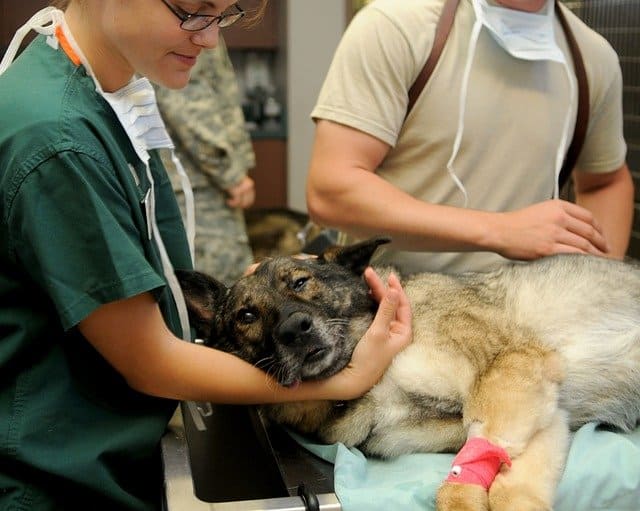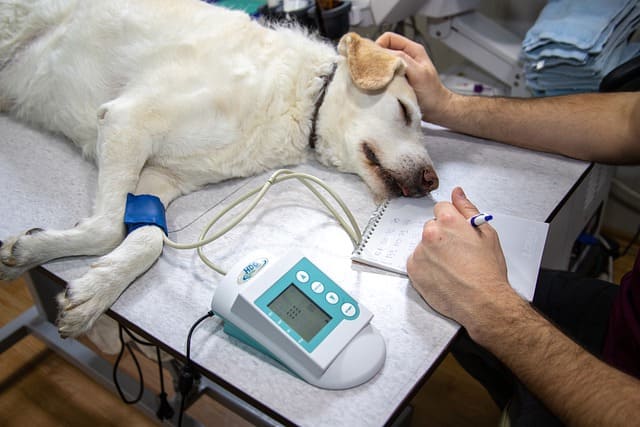Leishmaniasis is the medical term for a disease caused by the parasitic protozoan Leishmania and can be divided into two types of canine disease: skin (skin) reactions and visceral (abdominal) reactions, also known as black fever, which is the most severe form of leishmaniasis.
Infection occurs when sandflies transmit the parasites to the host’s skin. The incubation period from infection to the onset of symptoms usually ranges from one month to several years.

In dogs, it inevitably spreads to most organs throughout the body, with kidney failure being the most common cause of death.
Almost all infected dogs develop visceral or systemic disease. Up to 90% of infected dogs also have a skin disease.
There are no differences in age, sex or race, but visceral reactions were more frequent in males.

The main organ systems affected are the skin, kidneys, spleen, liver, eyes and joints. Skin reactions with skin lesions and hair loss are also common. There is a strong tendency to hemorrhage.
It is a terrible disease and one of my companions, a beautiful German shepherd cross, was unjustly taken away.
It is important to note that leishmaniasis is a zoonotic infection that can be transmitted to humans by organisms living in diseased areas.
Symptoms and types
There are two types of leishmaniasis in dogs: the visceral type and the cutaneous type. Each type affects a different part of the dog’s body.
Visceral: Affects the abdominal organs
- Severe weight loss
- Diarrhoea
- Vomiting
- Tarry stools (less common)
- Exercise intolerance
- Nosebleeds

Skin conditions
They are the most visible and painful symptoms for the dog and for you.
- Hyperkeratosis: the most obvious finding; excessive peeling of the skin, thickening, discoloration (loss of skin color), and cracking of the mouth, lips, and soles of the feet.
- Alopecia areata: dry and brittle hair, symmetrical hair loss.
- Nodules usually form on the surface of the skin.
- Nodules and intradermal ulcers may be visible.
- Some patients have abnormally long or brittle nails.
Other signs and symptoms associated with leishmaniasis
- Lymphadenopathy: Lymphadenopathy (lymph nodes) and skin lesions are present in 90% of cases.
- Thinning of the skin in 85%/90% of cases.
- Inflammation of the muscles.
- Neuralgia.
- Joint pain.
- Signs of kidney failure: excessive thirst, possible vomiting.
Most affected areas in Spain

Chart source: parasitesandvectors.biomedcentral.com
Diagnosis
Your veterinarian will perform a complete blood test, which will include chemical blood tests, complete blood count, and urinalysis. Tissue samples will be taken from the skin, spleen, bone marrow, or lymph nodes for laboratory cultures, as well as fluid aspirates.
A skin biopsy will also be required, as there are often associated lesions on the surface of the skin.
Most dogs with leishmaniasis have elevated protein and g-globulin levels and elevated liver enzyme activity, however, veterinarians should rule out tick fever as the cause of symptoms and may perform specific tests for lupus to rule it out or confirm it as a cause.

Treatment
Unless the dog is very sick, it will be treated on a regular basis with periodic inspections.
If the animal is emaciated and suffers from a chronic infection, you may need to consider euthanasia, as the prognosis for these animals is very poor.
If your dog is not severely infected, your veterinarian may prescribe a high-quality protein diet specific for kidney failure if necessary.
It is a zoonotic infection that can be transmitted to humans by organisms in the affected area. These organisms are never completely destroyed and a relapse requiring treatment is inevitable.
There are medications to treat the symptoms and control the disease and your veterinarian can advise you on the best way to act.

Life and management
Your veterinarian will want to monitor whether your dog has improved clinically and identify the disease during repeated biopsies.
You can expect a recurrence of the disease over a period of a few months to a year after initial treatment; your veterinarian will recheck your dog’s condition at least every two months after initial treatment.
There are many factors to determine the quality of life of the animal and depend on the health of the dog as well as the early diagnosis of the disease, which will require treatment over time, since the disease is chronic.
Note: we are not going to put photographs of dogs infected with this disease, because of the deterioration of them and that are not pleasant to see, I hope you understand me.
Do you help us share?

Muzzle

Can dogs eat lime or lemon?

Fruits and Vegetables for Dogs

Dog care

The arrival of a puppy

My dog ate a plastic bag
- Why do dogs bury bones? - January 2, 2023
- How long is a dog’s pregnancy? - December 24, 2022
- Why do dogs mark territory? - October 24, 2022
